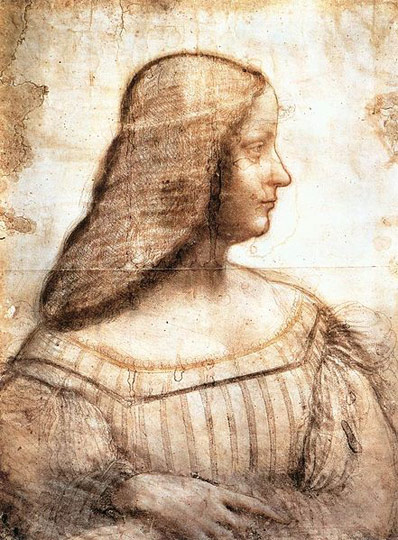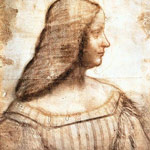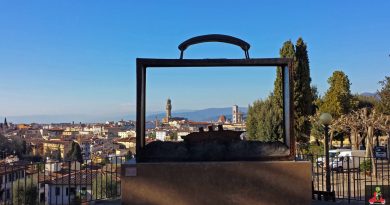New Leonardo Da Vinci painting has been reliably authenticated
A painting by Leonardo da Vinci that has been missing for 500 years was recently found in a Swiss bank. The painting is a portrait of Isabella d’Este (1474 – 1539), marquess of Mantua, who was one of the leading women of the Italian Renaissance.

Many art historians believed that Da Vinci did paint the portrait of the Marchesa, but were never really sure. Indeed, when Leonardo da Vinci was in Mantua in 1499, Isabella asked him to paint her portrait. A famous sketch, which was the preparatory phase to the painting, is exhibited at the Louvre in Paris. It is one of Leonardo’s finest head-and-shoulders portraits and the only known drawing for which Da Vinci used various colored pigments.
Based on the existence of this preliminary sketch, art historians thought until recently that the painting probably had existed, but that it went missing or was destroyed.
So, the recent authentication of the ‘new’ Da Vinci painting is a major discovery. The materials used to paint the portrait have been reliably authenticated with carbonio-14. The test, positive at 95,4%, revealed that the portrait dates from a time period running from the 1450s to the early 1600s. The major expert in authenticating disputed works by Da Vinci, professor Carlo Pedretti – interviewed by the Italian newspaper Corriere della Sera – also confirmed that the painting is by the hand of Leonardo, not excluding the possibility, however, that some details may have been added by one of his pupils. A common thing at that time.
Even more striking is the preparation of the canvas, which is identical to the technique described by Da Vinci in his Treatise ‘On Painting’. In this work the painter describes in detail not only how to prepare canvas for painting, but also how to paint on it. So, the argument that the painting can not be attributed to Da Vinci precisely because it was painted on canvas, does not hold.
While it is true that the only four – thus far known – female portraits by Leonardo da Vinci were all painted on wood panels (the Lady with the Ermine and La belle ferronnière on walnut, while the Mona Lisa and Ginevra de’ Benci were painted on poplar), the artist developed his technique of working on canvas already during his early apprenticeship in Verrocchio’s studio in the 1470s. So, long before he painted any of the four portraits. According to the Mona Lisa Foundation an earlier version of ‘Mona Lisa’ was also painted on hand-woven canvas, “a material with which Leonardo had significant experience before 1500”. A description of Da Vinci’s technique by Giorgio Vasari confirms that the master indeed painted on canvas. Moreover, the Court Painter for Isabella d’Este at the time when Da Vinci visited the marquess, was a great exponent of painting on canvas, which might have influenced Da Vinci in the choice of this medium.
The painting measures 61 by 46.5 cm (24 by 18 inches) and corresponds trait by trait to the original sketch. It depicts a perfectly linear profile of the marquess, a choice of pose that is striking for that time
The painting belongs to an Italian family which placed it in a safety vault in Switzerland where it has been kept since the early 1900s, together with about 400 other paintings.
Written October 4, 2013, updated October 14, 2013.





What a fantastic discovery!! I was able to go to a gallery showing of Da Vinci’s drawings in Vancouver, BC and was amazed at his skill. 🙂
That’s wonderful ! Yes, he was an amazing artist and a true Renaissance man, expressing his genius not only as a painter, but also as an engineer, architect, mathematician and inventor. Isn’t that incredible ?